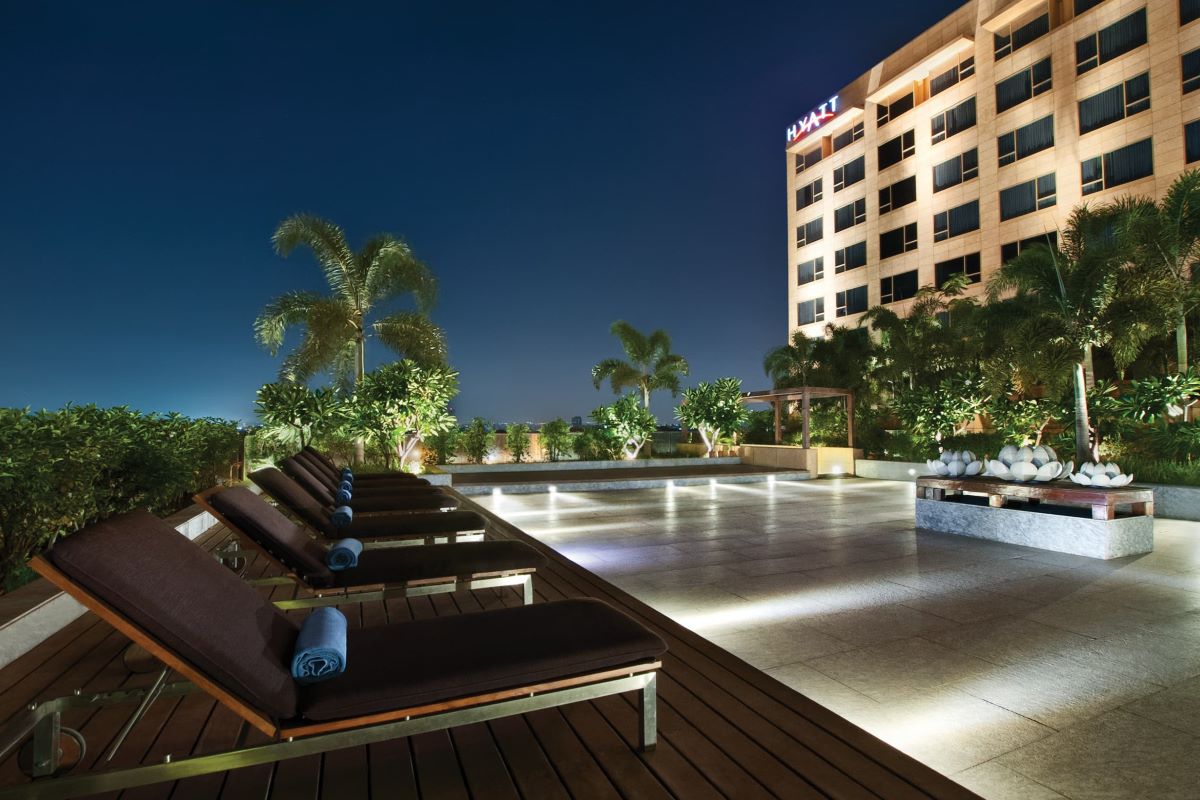Hotel Developers Want to Cut Costs: Enter 3D Printers and Prefab Rooms
Skift Take
A large-scale 3D printer is currently at work building a 60-acre hospitality village in Marfa, in western Texas. The desert development is a major extension of the existing El Cosmico luxury campground and will include a hotel, bathhouse, restaurant, and private residences. It's expected to be completed in 2026.
A nozzle on a robotic arm squeezes out a cement-like mix to create curved walls in harmony with the desert surroundings. Crucially, the entire building process is automated, requiring only one person to monitor proceedings from a tablet.
The El Cosmico project is at the very cutting edge of modern construction techniques. ICON, the Austin-based firm delivering the technology, also has a contract with NASA to build on the moon.
Spencer Padgett, VP of design and build at ICON, said: “Speed of construction is greatly reduced. There is the opportunity to have more freedom in the design, incorporating organic forms and beautiful curves that would be cost-prohibitive with traditional architecture.”
Investors, owners, and brands always look for fresh ways to get hotels to market quickly and efficiently.
Padgett added: “We’re already seeing strong interest from various sectors, including hospitality. As this technology matures, we’re optimistic that 3D printing will gain traction across the industry.”
High construction costs and lending restraints have caused a slowdown in newly built hotel development. In their insatiable quest for NUG (net unit growth), global brands have increasingly turned to conversions. That said, in certain segments - particularly extended stay — the proportion of new builds remains high.
Hotels Try Modular Construction
3D printing is very far from mainstream, but modular and prefab construction techniques have a long history.
Well-known in Europe, modular is a niche but growing building method in the U.S., accounting for 6.6% of all construction starts last year (compared to 2.1% in 2015).
Hotel company CitizenM opened its first modular hotel in Amsterdam in 2008 and has since built several in the U.S., including the first-ever high-rise modular building in Los Angeles.
The LA hotel, with 11 stories and 315 guest rooms, took seven months to build and open in 2021. The bedroom modules were made in China, shipped to LA, and stacked onto the foundation like toddler building blocks.
So far, CitizenM has not found a suitable U.S.-based modular supplier, but that may change given the talk of import tariffs, trade protectionism, and reduced U.S. manufacturing corporate taxes potentially coming from the Trump administration.
Rani Gharbie, CitizenM’s managing director of D&I for the Americas, said: “The modular building approach has become integral to the CitizenM brand. We have found several important advantages, including shorter construction times (often by several months), reduced costs, and more.”
"Still relatively rare throughout North America, modular not only enables faster construction but also allows a higher degree of product quality control. For hotel brands with large and growing portfolios, this level of standardization is a significant advantage."
He added that shortened project timeframes reduce carbon emissions and construction waste, down to just 2% from 10-20% for a traditionally built product.
CitizenM has more than 40 hotels and 10,000 rooms across Europe, North America, and Asia. Recent openings include Austin, Boston, and Miami, with new hotels in Washington, D.C., Dublin, and London scheduled for 2025.
Lower Costs
Modular construction requires fewer workers than traditional building methods, which means construction unions and city authorities have not always welcomed it.
Assembling the pre-built modules of a large hotel requires an onsite team of around 10 to 20 workers, compared to a crew of between 50 and 100 on a conventional construction site.
According to a Modular Building Institute (MBI) study, modular design saves 16% in costs and 36% in building time compared to conventional onsite construction.
However, modular is not always the most financially viable way to build. One key consideration is land transport and the distance between the construction site and the modular factory.
Caitlin Bigelow is a director at Volumetric Building Companies, which has two modular factories in the U.S. (California and Pennsylvania) and three in Poland. The firm has built for several hotel brands, including CitizenM (19 projects), Marriott International, Hyatt, Premier Inn, and IHG.
She said: “Modules, such as hotel room units, need to be transported, often on flatbed trucks. These require special permits, escorts, and larger vehicles that come at a cost. If the distance is too great, it can negate any cost-saving benefits."
Shipping by sea is generally more efficient and less expensive, especially if the modular factory and the construction site are near major ports.
Transport was not much of an issue during the construction of the Home2 Suites by Hilton, which opened in October 2024 in Owatonna, Minnesota.
The extended-stay hotel, which has 84 suites with kitchenettes, is a partnership between Kinseth Hospitality, an active Hilton and Marriott franchisee in the Midwest, and RISE Modular. Founded in 2019, the RISE Modular factory is just 1.2 miles away from the site of the new hotel.
Accommodations Sector Stock Index Performance Year-to-Date
What am I looking at? The performance of hotels and short-term rental sector stocks within the ST200. The index includes companies publicly traded across global markets, including international and regional hotel brands, hotel REITs, hotel management companies, alternative accommodations, and timeshares.
The Skift Travel 200 (ST200) combines the financial performance of nearly 200 travel companies worth more than a trillion dollars into a single number. See more hotels and short-term rental financial sector performance.
Read the full methodology behind the Skift Travel 200.




